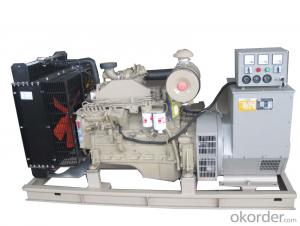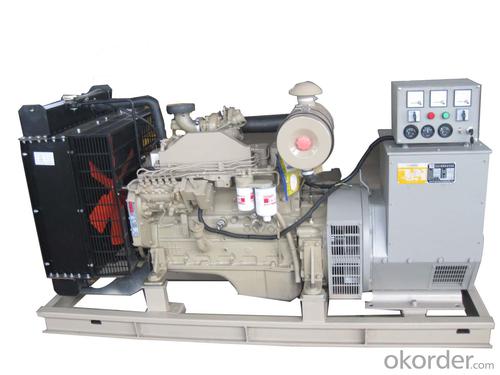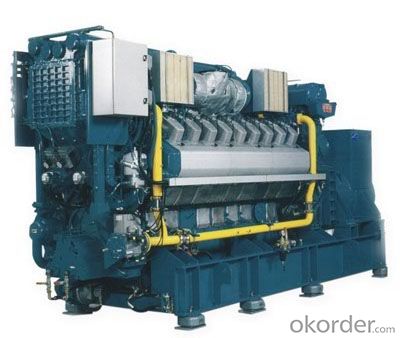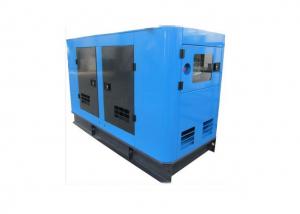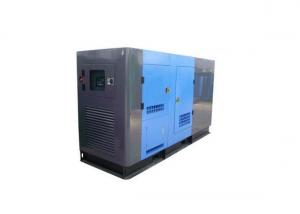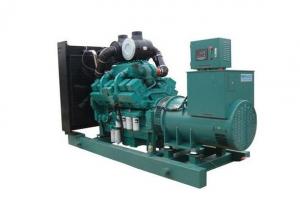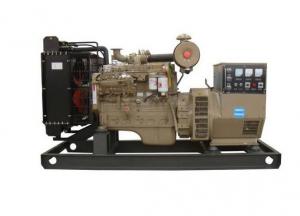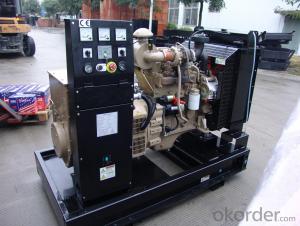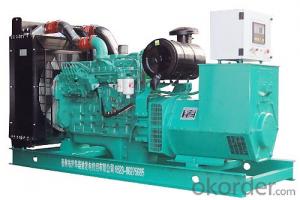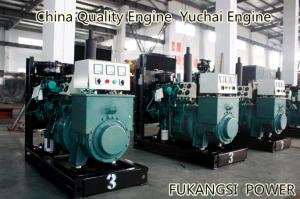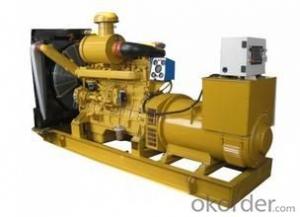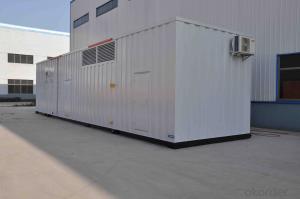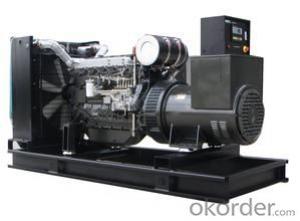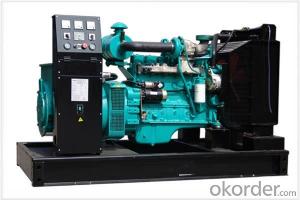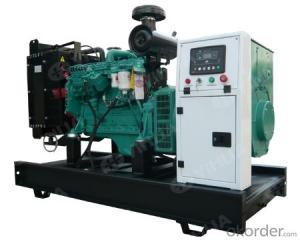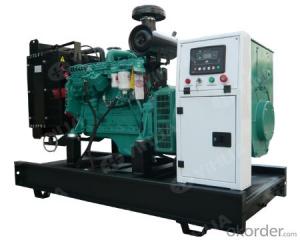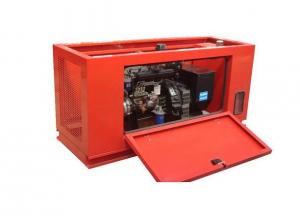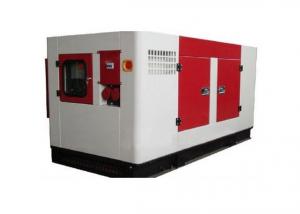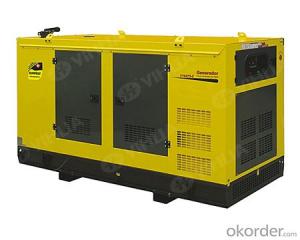Product list of China Engine type Generator FX320
- Loading Port:
- Shanghai
- Payment Terms:
- TT or LC
- Min Order Qty:
- 1 set
- Supply Capability:
- 1000 set/month
OKorder Service Pledge
OKorder Financial Service
You Might Also Like
Specifications
1.Jichai diesel generator
2.Optional alternator
3.long-term spare parts
4.low fuel consumption
5.economic price
1100kw/1375kva Jichai Reliable Diesel Generating set
Engine features :
1.China most famous brand diesel engine: Jichai engine
2.Multi-cylinder in-line or veer engine,4 stork,direct injection
3.Naturally aspirated,turbocharged,water cooled or turbochaged with air intercooler.
4.Machinery or electronic governing
5.Fuel injection pump
6.Electric motor starting system
7.Forged steel crankshaft,cast iron cylinder and replaceable wet type cylinder liner
8.Low discharge,and low fuel consumption
9.Installed conveniently and maintain easily
Alternator Features:
1.World famous brand AC alternator:Leroy Somer,Stamford,Marathon.Engga ect.
2.Brushless,4 poles,rotation magnet
3.IP21-23 enclose is standard for all industrial alternators.
4.H class insulation system
5.AVR self-regulated,voltage regulation rate:±1%
6.Simple installation and maintenance with easy easy access to terminals ,rotating diodes and coupling bolts.
7.Moisture proof,sand-proof,dustproof ,salt-proof and vibration-proof.
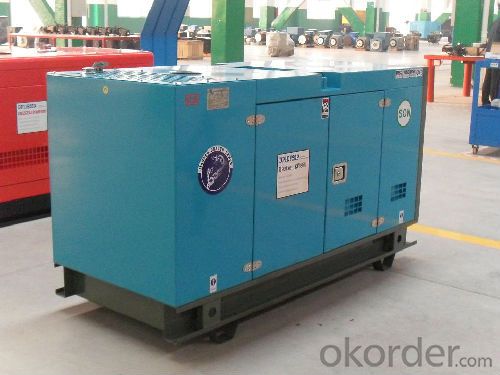
Control system(Output 800KW):
1.a) Automatic alarm system:the unit has the acousto-optics alarm system and arrestor for any situation as the start defeat,the water is over temperature,
the oil pulls down ,over speed,over load and over current.
b) Operation display:
i)Unit voltage,tri-phase load current and frequency display
ii)Water temperature .oil pressure display
iii)Fuel level, fuel temperature display
iv)Audible and visual alarm lamps and buzzers
2.Accessories:exhaust elbow,below,muffle
- Q: If electric vehicles included a generator they could charge the battery while moving. It seems the best choice to me.
- WELL THEN ITIS CALLED A HYBRID BECASUE IT IS NOT RUNING OFF OF STORED ENERGY AND CHARGED SOMWEWHERE ELSE I HAVE WONDER THE SAME THING AS WELL BECAUSE THE GREAT BIG LOCOMOTIVES THAT PULL HUNDREDS OF FREIGHT CARS USE A DIESEL ENGINE TO RUN A MASSIVE GENERATOR THAT RUNS ELECTRIC MOTORS AT THE WHEELS, ITS MORE EFFECIENT AND THAT BEEN USED FOR YEAR,S ON TRAINS,
- Q: I know with cars there is a blue book but how does it work for a generator? We have an 80kw Kholer Diesel generator with 1,050 hrs on it and it's 13 years old. It gets regular maintenance and is in great shape. I've been looking online but can't seem to figure out how much it's worth.
- $8,000-$15,000 depending on the exact model and much more information. Generators have as many options as cars, and that is why the prices vary.
- Q: I know that various types of locomotive's produce different amount of horse power. Here's the question: A single locomotive (any type) about what would be the average speed it could gain in 0 to 4 seconds on take off. Any smart A** answer will be reported for abuse, Thank you.
- Others here with more knowledge on diesel locomotive mechanics and operations can give a better answer but because most diesel locomotives, particularly road-switchers, are not rated/geared to accelerate that quickly in that small amount of time (now an electric locomotive is an entirely different story), I would guess no faster than between 10-20mph in the timeframe you noted, 0-4 seconds. Perhaps something like an EMD E-series locomotive (which is rated for speed carrying passengers) could make the best time but again, I would guess no better than maybe 20 mph in 0-4 seconds.
- Q: creating steam turbines that can run on ANYTHING to power the electric generators in modern engines?
- So you people don't really read any of these postings do you? How many times do we have to answer the same questions? Bio diesel is not the way to replace fuel oil (diesel). There is not enough acreage in the USA to grow the amount of crops, any crops, to make bio fuels to power the existing fleet of vehicles much less the future fleet. And carrying water on locomotives is very inefficient. Steam Engines (Sterling Engines) are a very efficient means of moving huge vehicles. That is why they use nuclear/steam to power air craft carriers but hauling water to make steam cuts the payload so much that it becomes unprofitable. Why would we want to go back in time and technology? We can go to plug in electric powered vehicles that are charged by photovoltaic panels at your home or work. And, naysayers pay attention to this, Linear Electric Drive would power long distance and heavy hauling.
- Q: I want to build a deisel generator that electrolizes water to make oxygen and hydrogen to increase fuel efficiency. Then I want to make an algae bioreactor and extract the fuel from the algae to power my diesel generator. What is the smallest engine that can support this? Do I need fuel injection or can the oxyhydrogen come in through the air intake? As I understand with oxyhydrogen added you can acquire a 100% fuel efficiency.
- I'll guess HOH can be used, with all sizes of diesel and gasoline motors, likely even in gas turbine motors and jet engines, BUT it as near zero utility for any of them. Even the fractional hp model airplane motors should work. More than a pint of HOH Brown's gas is a serious explosion hazard, so be sure production is reduced while the motor is idling.
- Q: how exactly to fossil fuel power plants work?
- the short answer is they use the fuel to heat water and create steam and use the steam in a turbine to create electricity
- Q: Hi. Wondering if someone could help me out with some info on how to change the output of a generator from 60hz to 50hz without a converter? Some advice would be appreciated. Thanks .
- Connect a device that will measure the line frequency whilst the generator is running (digital multimeter) slowly decrease the RPM until 50 Hz is reached. This should be done after the generator has warmed up for about 10 minutes.
- Q: If i had a remote alaskan town of 1000 residents, how much power would I need to generate to run the whole town. Would a diesel generator work?
- A mine can take a *LOT* of power. If it were just the people, and they were not used to electrity, maybe a MegaWatt would be enough, for a while at least. Since you would be burning diesel to make the electricity, price would be high. You might want to get firm contracts that somebody would buy all you generate.
- Q: i know that steam powers the turbine. And depending on the type of plant, i know how the steam is made. But once the turbine is spinning and generating electricity, i get lost. I know it all has something to do with electrons and metal coils and magnetic fields, but can you help me understand it all?
- Electrical power plants powered by geothermal energy are common in areas of high crustal heat flow, such as in Iceland, New Zealand, and the western US, including Beowawe, Nevada, and The Geysers, California. The basic principle is to drill a hole deep enough to tap into a water reservoir which is hotter than 100°C, ie, higher than the boiling point. The water is hotter than the boiling point due to the confining pressure, and the water is piped into a turbine where it is allowed to flash (boil) to drive the turbne. The steam is collected, condensed, and re-injected into the reservoir to keep the cycle going. The turbine spins a generator, which converts mechanical energy from the spinning turbine into electrical energy through electromagnetic conduction as the desired output. It doesn't matter that the generator is connected to a geothermal steam turbine, a water wheel, a jet engine, a diesel engine, or a hamster wheel. A generator does not actually ‘create’ electrical energy. Instead, it uses the mechanical energy from the spinning turbine to force the movement of electric charges present in the wire of its windings through an external electric circuit. This flow of electric charges constitutes the output electric current supplied by the generator. This mechanism can be compared to a water pump, which causes the flow of water but does not actually ‘create’ the water flowing through it. A generator works on the principle of electromagnetic induction discovered by Michael Faraday in 1831-32. He discovered that the flow of electric charges could be induced by moving an electrical conductor, such as a wire that contains electric charges, in a magnetic field. This movement creates a voltage difference between the two ends of the wire or electrical conductor, which in turn causes the electrons to flow, thus generating the desired electric current. Hope that helps!
- Q: i have a plan to supply electric power supply to a colony of around 250 houses each have a load of approximately : 3 x1.5 ton air conditioners and all the other stuff of household use. voltage required is 400v 3 phase or 240 volt single phase. my question is if some one can please calculate the requirement of load for the above requirement and what size of generator is required for this load. thanks
- With that large a system, you should get a quote from professionals. You need better numbers on power usage, both average and peak. And the pros can help with that. See if you can get a sample of 10 electric power bills and use that as an average to calculate the average power for all 250. Peak is difficult. They each have 4.5 ton worth AC? must be a hot climate. You can use 1.2 kW per ton, so that is 5.4 kW per house or 1.4 MW total just for the ACs Is there electric stoves, hot water, etc? that could double the above number. So we are up to perhaps 3 MW already. At that level, you probably need a higher voltage system, perhaps a 6 kV distribution system. That costs money, plus all the transformers, one per 2-4 house, plus all the underground digging. Assuming you want this underground, not on poles. Again, contact a company that does this, such as Siemens, Bosch, GE, they would be happy to give you a good quote. edit: when you look at the ratio of peak power to average power, you will see a large number, as high as 10. that means you could require a (eg) 3 MW generator although the average power is only 0.3 MW. That means the efficiency is low and the costa are high. That is why large power distribution systems are much better, as the peaks are not nearly as high, and also power companies have special units that are usually offline and come online to handle the peaks.
Send your message to us
Product list of China Engine type Generator FX320
- Loading Port:
- Shanghai
- Payment Terms:
- TT or LC
- Min Order Qty:
- 1 set
- Supply Capability:
- 1000 set/month
OKorder Service Pledge
OKorder Financial Service
Similar products
Hot products
Hot Searches
Related keywords
